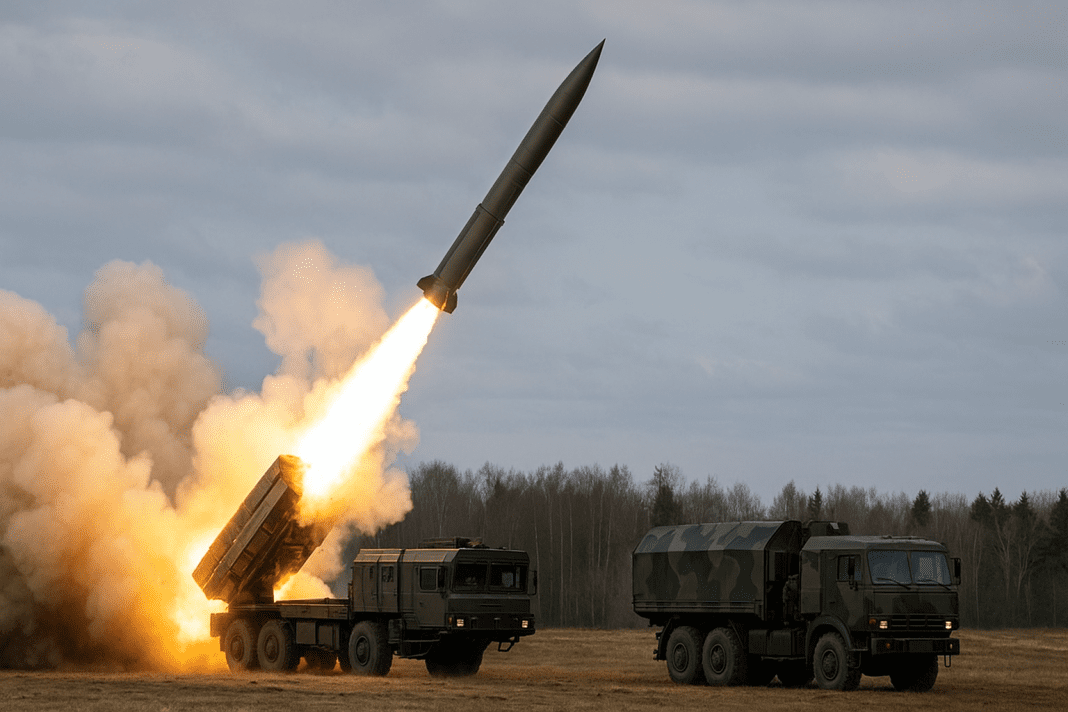Ukraine has taken a major step to protect its most powerful weapons systems by moving weapons production facilities to NATO countries. The decision aims to keep these facilities safe from attacks by Russian missiles and drones. One of the biggest changes involves the Ukrainian company Fire Point, which makes advanced weapons like solid rocket fuel used in long-range missiles.
Ukraine Moves Key Weapons Production to NATO Territory
Fire Point recently announced that it is shifting its weapons production, specifically its solid rocket fuel facility, from Ukraine to Denmark. The new factory will be built near the Skrydstrup Airbase in Vojens, where important NATO facilities are also located. This area offers more security and a stronger defense system, making it harder for Russia to target the facility.
The new weapons production plant is expected to start operations in December this year. Denmark’s government is providing $78 million to support the project. The move comes amid fears that weapons production sites inside Ukraine are vulnerable to Russian air strikes, which have already damaged military locations and supplies in past months.
Mark Rutte says Europe moves to expand artillery shells production amid Ukraine war needs
Fire Point is known for developing the Flamingo FP-4 cruise missile. This missile can travel over 2,900 kilometers and carries a warhead weighing up to 1,100 kilograms. Ukraine’s leadership recently confirmed that weapons production of the missile will start early next year, with plans to manufacture them in large numbers. Some reports suggest that Flamingo missiles may have already been used in attacks in Crimea, although this has not been officially confirmed.
In addition to the Flamingo FP-4, Fire Point is working on other weapons like the FP-7 and FP-9 ballistic missiles. These missiles have ranges of 200 kilometers and 855 kilometers, respectively. The new weapons production facilities in Denmark will help increase capacity and ensure a steady supply of weapons for Ukraine’s military efforts.
Lessons Learned from the Sapsan Weapons Production Program
Ukraine’s decision to move weapons production facilities abroad is driven by past experiences. One of the biggest setbacks was the failure of the Sapsan weapons production program. The Sapsan, also called Grom-2, is a short-range ballistic missile developed by Ukrainian companies. It has a warhead capacity of 500 kilograms and a range between 50 and 500 kilometers, with some reports suggesting up to 700 kilometers.
The missile system combines features of both tactical missiles and rocket launchers. It is similar to the U.S. ATACMS missile and was expected to strengthen Ukraine’s defense capabilities.
However, starting in June last year, Russian forces launched a series of attacks on the weapons production facilities supporting the Sapsan missile. Factories like the Pavlograd Mechanical Plant and Pavlograd Chemical Plant were targeted and destroyed. Other facilities, including the Shostka State Plant “Zvezda” and chemical research centers, were also hit. These sites handled missile development, design, and quality control.
The strikes continued through the following months, crippling Ukraine’s ability to conduct weapons production. After destroying factories, Russian forces targeted stored missiles and spare parts, cutting off supply lines and slowing down production.
This experience showed how vulnerable weapons production inside Ukraine is to Russian air attacks. To prevent another collapse, Ukraine now seeks to relocate vital weapons production facilities to safer locations in NATO countries like Denmark, where they will be protected from direct attacks.
How Russia May Respond to Ukraine’s New Strategy
As Ukraine moves its weapon production facilities to NATO countries, Russia faces new challenges. Attacking weapons production factories inside Ukraine no longer gives Moscow the same advantage, as key facilities are now outside its reach.
Russia is unlikely to attack NATO countries directly. Doing so would risk a major escalation and damage its international standing. For this reason, Moscow’s options are limited.
Experts believe that Russia might instead focus on other targets. One strategy could be attacking Ukraine’s logistics system, which helps transport weapons and supplies from Western allies to the front lines. Most of this network is located in western Ukraine, far from the battlefield, making it harder to destroy.
Another option is to strike cargo ships that transport weapons and ammunition across the sea. Attacking these ships could slow down weapon production efforts by disrupting supply lines without crossing into NATO territory.
Putin warns of NATO troops in Ukraine as France and UK pledge long term security support
Russian forces have also considered destroying bridges across the Dnieper River in Ukraine. Many military supplies pass through these bridges, and destroying them could disrupt transport routes for weapons production materials. However, destroying all bridges has proven difficult. Past attacks have failed to make major bridges unusable.
Russian military planners may also be cautious. Destroying key bridges could show that Russia has no intention of using them in future military operations. This might encourage Ukraine to harden its defenses and resist peace talks.
For now, Russia’s ability to respond is constrained by geography, technology, and political risks. With Ukraine’s weapons production moving to more secure locations in NATO countries, Russia’s previous advantage in air strikes is weakening.

